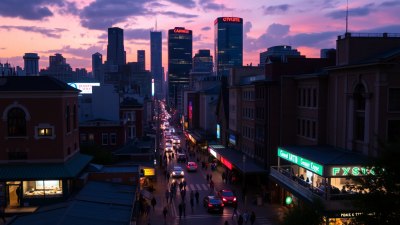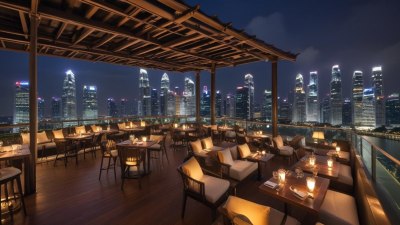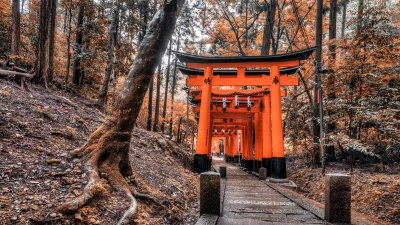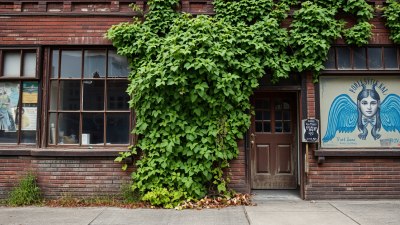The City Rewrote Itself Overnight
Explore the transformation of a city that reinvented itself overnight, redefining urban life and culture.

Image created with Flux Schnell
In the heart of the metropolis, a radical change unfolded overnight, transforming the landscape and the lives of its residents. This city, once defined by its historical buildings and casual charm, became a canvas for innovation and reinvention, propelling it into a future that was both exciting and uncertain. The event triggered a combination of urban planning, art installations, and community engagement that resulted in a metropolis which was not only vibrant but also sustainable.
Historical Context
The city has always had a unique identity, nurtured by its rich history and diverse culture. Its landmarks narrated tales of yesteryears, creating a sense of nostalgia among its inhabitants. However, as global challenges, including climate change and technological advancements, became more pressing, the old systems proved inadequate for a rapidly evolving society. The need for change had long been acknowledged, but the actual push for transformation came unexpectedly, driven by a collective ambition to embrace the possibilities of a brighter future.
The Catalyst for Change
The catalyst was an unprecedented incident that shook the city to its core. A massive storm, coupled with power outages and flooding, forced residents to evacuate and seek shelter elsewhere. When they returned, they found their city unrecognizable. Gone were the congested streets lined with cars; in its place were vibrant spaces filled with greenery and public art. The city’s administration, in a bid to revitalize the community and encourage citizen engagement, had taken a bold leap into innovative urban development.
Redesigning Urban Spaces
The redesign focused on creating pedestrian-friendly areas. Streets that were once dominated by vehicles transformed into walkable boulevards, adorned with parks, bike lanes, and local art installations. Community gardens sprouted in vacant lots, turning once-neglected areas into green oases that fostered social interaction and communal activities. The use of sustainable materials in new constructions further emphasized a commitment to environmental stewardship.
Community Involvement
The city's residents were not just passive observers of change; they were integral to the process. Local forums and workshops were organized, giving citizens a platform to express their ideas on what their city should look like. This participatory approach enriched the design process, allowing the final outcome to reflect the diverse voices of the community. Residents came together to clean up rubble, plant trees, and paint murals, fostering a strong sense of ownership and pride in their revitalized surroundings.
Technological Integration
Technology played a significant role in reshaping the urban landscape. Smart city solutions were integrated into the new infrastructure, optimizing resources and enhancing quality of life. An advanced sensor network monitored air quality, traffic flow, and energy consumption, providing essential data to improve city services and respond dynamically to residents’ needs. Public transport was revamped, offering eco-friendly options such as electric buses and bike-sharing programs, promoting a culture of sustainability while minimizing reliance on carbon-emitting vehicles.
Art and Culture Resurgence
Art flourished in this new environment, transforming public spaces into open-air galleries. Local artists were commissioned to create murals, sculptures, and installations that celebrated the city’s heritage and aspirations. Annual art festivals emerged, attracting artists from around the world, creating cultural vibrancy and fostering connections among diverse communities. The arts became an economic driver, as galleries, studios, and performance spaces opened, further intertwining with the fabric of the city's identity.
Socio-Economic Revitalization
The economic landscape saw a transformation as well. New businesses sprang up, centered around the ideals of sustainability and community welfare. Markets featuring local produce and artisanal goods flourished, encouraging residents to support one another and invest in their locality. The city attracted start-ups seeking to innovate in social enterprises and green technologies, enhancing economic diversity and job creation. Although not all businesses thrived, the ones that embraced the ethos of collaboration and sustainability thrived and contributed positively to the community.
Environmental Sustainability
The commitment to environmental sustainability was evident in every aspect of the city’s renewal. Urban forestry initiatives led to an increase in green cover, improving air quality and providing habitats for local wildlife. The city implemented rainwater harvesting systems and solar energy installations, reducing reliance on traditional energy sources. Sustainable waste management practices were implemented, encouraging recycling and reusing materials.
Challenges Along the Way
Despite the successes, the journey was not without challenges. Gentrification posed risks to long-standing residents, raising concerns over affordability and displacement. Efforts were made to address this through affordable housing policies and community land trusts that aimed to ensure that all residents benefited from the city’s transformation. Navigating the complexities of balancing development while preserving cultural heritage demanded a careful and inclusive approach.
The New Identity
As the dust settled, the city emerged with a new identity, one that blended tradition with innovation. The core values of sustainability, inclusivity, and resilience became synonymous with its character. As residents strolled through their vibrant neighborhoods, they could feel the pulse of a community that had come together, turning a moment of crisis into an opportunity for renewal.
Looking to the Future
What does the future hold for this reimagined city? The community recognizes that transformation is an ongoing process, one that requires vigilance, adaptability, and continual engagement. Future plans emphasize further integrating technology with green practices, seeking to inspire other cities facing similar challenges. The spirit of collaboration and creativity, forged during the initial transformation, remains a driving force as the city evolves.
A Lesson for Others
This city’s dramatic overnight rewrite serves as a beacon of hope for urban centers around the world. It stands as a testament to the formidable power of community action, innovation, and sustainable practices. As more cities face the pressures of rapid urbanization and environmental degradation, the lessons learned here—of resilience, creativity, and the importance of inclusivity—will guide the way forward.











